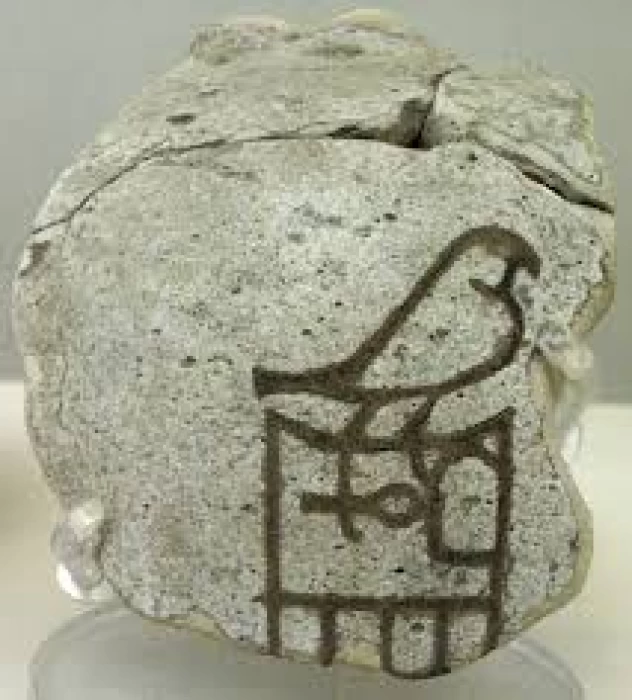
King Hor-Aha | Dynasty 1 | Horus Aha King
King Hor-Aha | Horus Aha King
Aha is identified as the second pharaoh of the first dynasty by seal impressions found in the tombs of Merytneit and Qaa at Umm el-Qaab by G. Dreyer. Six Narmer, the man who came before him, had combined Upper and Lower Egypt into one kingdom. Aha most likely came to the throne in the late xxxxii century BC, early xxi century BC, or early xxxxi century BC. Manetho claims that he ascended to the throne at the age of thirty and ruled Egypt until he was roughly sixty years old.
King Hor-Aha | First Dynasty of Ancient Egypt
King Hor-Aha, also known as Horus Aha or simply Aha, was one of the earliest pharaohs of Ancient Egypt, reigning during the 1st Dynasty (c. 3100 BCE). He succeeded King Narmer, who is often credited with uniting Upper and Lower Egypt. As the second ruler of the dynasty, Hor-Aha is believed to have played a crucial role in solidifying this unification and laying the foundations of the Egyptian state.
Name and Identity
The name "Hor-Aha" translates to "Horus the Fighter" or "Horus the One Who Strikes," reflecting the king's association with the god Horus, the falcon-headed deity of kingship and protection. Like other early pharaohs, his name emphasized his divine connection and role as a mediator between the gods and the people.
Reign and Achievements
Hor-Aha's reign marked a period of administrative consolidation, religious development, and possibly military expansion. Some highlights of his rule include:
Religious Contributions:
Hor-Aha is credited with significant contributions to the religious landscape of Egypt. During his reign, the worship of the goddess Neith, a war and hunting deity, became prominent. Evidence suggests he may have founded a temple dedicated to Neith in Sais, located in the Nile Delta.
Urban Development:
Archaeological evidence indicates that Hor-Aha continued the efforts of his predecessor to establish Memphis as the political and administrative capital of unified Egypt. This city would later become one of the most important centers of power in the ancient world.
Military Campaigns:
While direct records of his military exploits are scarce, his name, which implies aggression or strength, and the early depictions of pharaohs as warriors, suggest he may have engaged in battles to maintain control over the newly unified kingdom or expand its territories.
Burial Complex:
Hor-Aha's tomb has been discovered at Umm el-Qa'ab near Abydos, a significant necropolis for early Egyptian kings. His burial complex consists of multiple chambers and showcases the architectural innovations of the early dynastic period. Grave goods found within his tomb highlight the advanced craftsmanship of the era and suggest elaborate burial rituals.
Legacy
Hor-Aha’s reign is significant because it helped establish the traditions and institutions that would define pharaonic Egypt for millennia. By reinforcing the role of the king as a divine ruler and strengthening centralized power, he ensured the stability of the fledgling state.
As an early monarch, Hor-Aha’s life and achievements are still shrouded in mystery, but his contributions to the formation of ancient Egypt's political and cultural identity are undeniable. His legacy paved the way for one of the most remarkable civilizations in human history.
Aha ( 3100 B.C.), Horu's name (Hor-Aha), was an Egyptian pharaoh, belonging to the 1st dynasty. The name Aha appears in the Palermo Stone as a unifier of Egypt. This fact, combined with the discovery of an ivory tablet where, together with the name Aha, the hieroglyph mn (referring to King Menes) is reported, has led some scholars to assume that (Narmer - Menes - Aha) are names of the same ruler.
An ebony tablet found in Abydos commemorates a campaign against the Nubians. The extension of the southern border to the region of Elephantine may be due to him. In other inscriptions, his name is accompanied by Receiving Upper and Lower Egypt, and therefore it is likely that Aha worked to strengthen the work of Narmer, his predecessor.
His father was King Narmer and his mother was Queen Neithhotep. The marriage between his parents was originally a political union. Neithhotep was a princess of Lower Egypt and Narmer was a king of Upper Egypt. The marriage surely provided the primary unification of Upper and Lower Egypt. The unification of Egypt was not completed until the end of the second dynasty. He is believed to have built a Mastaba Tomb in honor of his mother Queen Neithhotep at Naqada, near This. Egypt offers tourist sites that will remain engraved in your memory after a visit among which Egypt Tours remains the best in organizing trips to the Pharaonic land.
Hor-Aha has been the subject of controversy. Some believe that he is the pharaoh Mines, who succeeded in unifying Egypt. Others claim that he was the son of Narmer, the pharaoh who unified Egypt. And that Narmer and Mines could be one and the same person who considered himself the person who unified Egypt.














